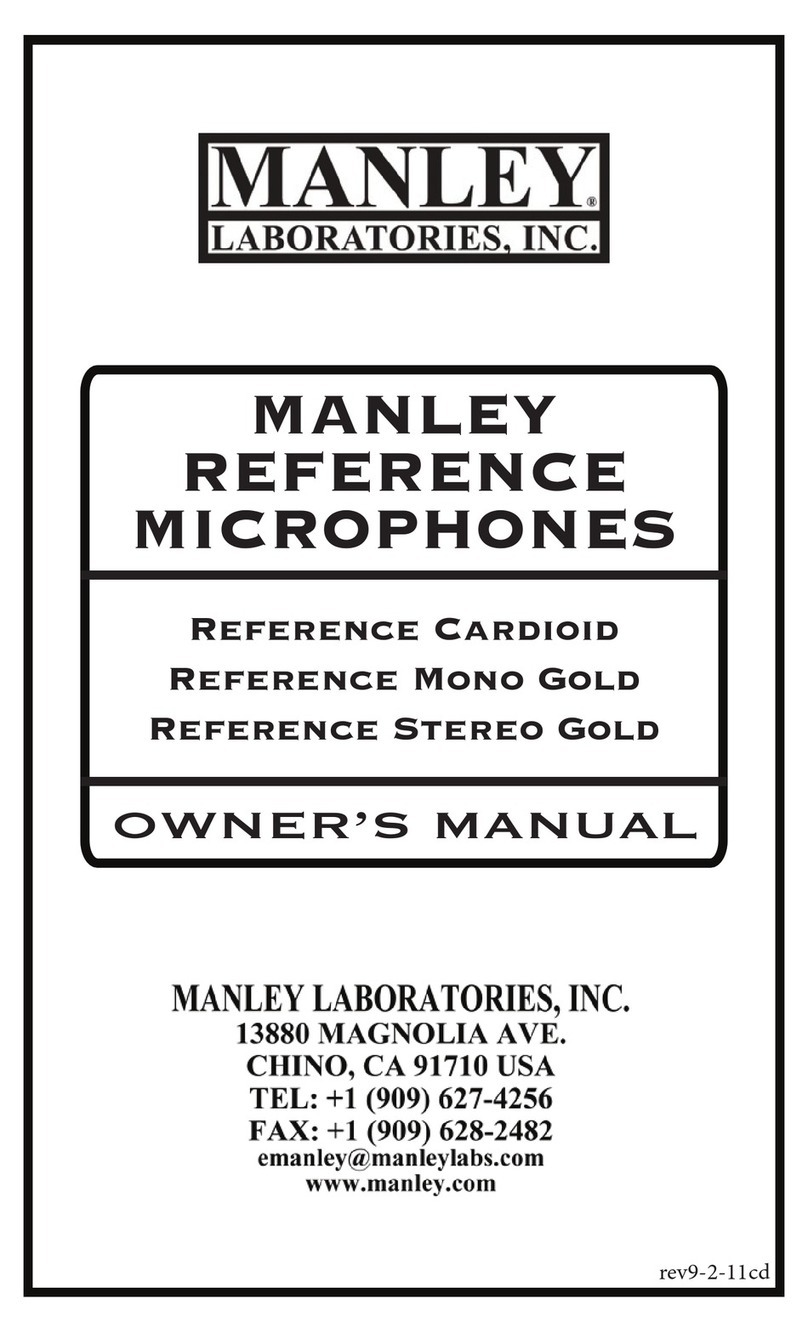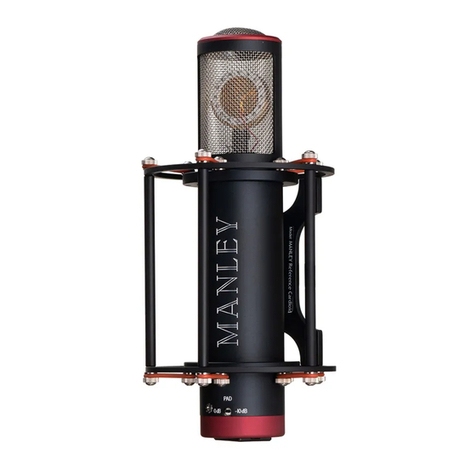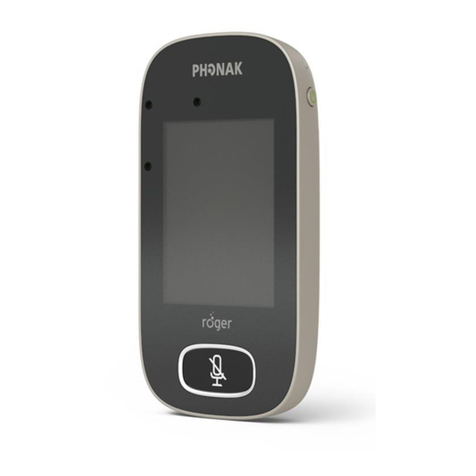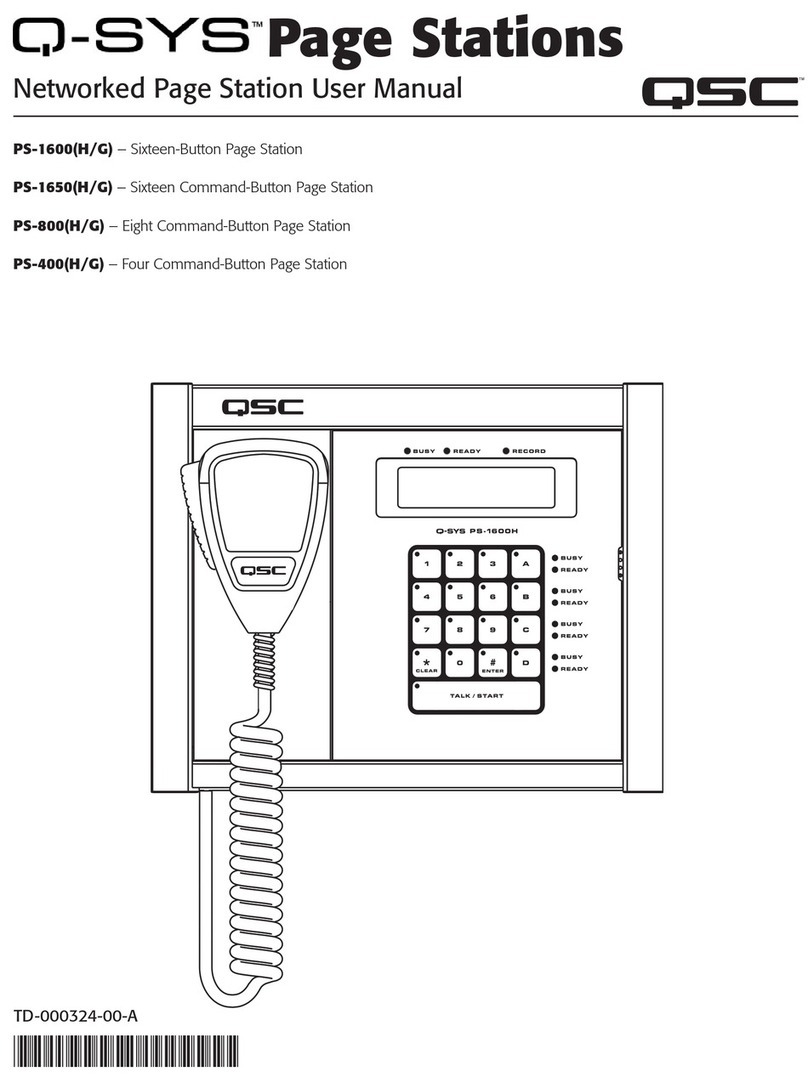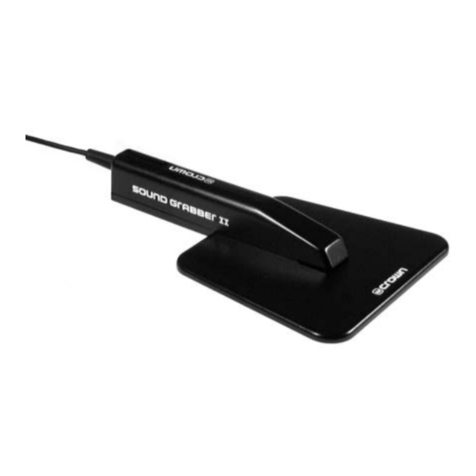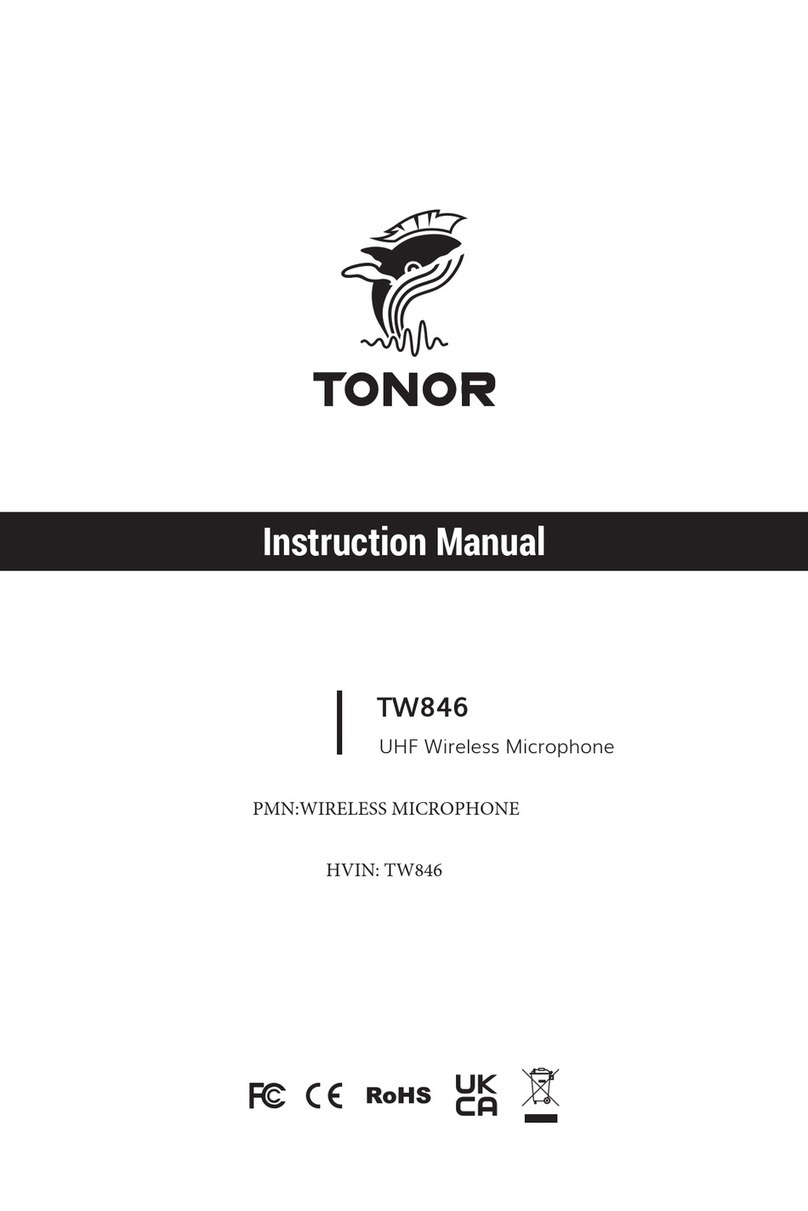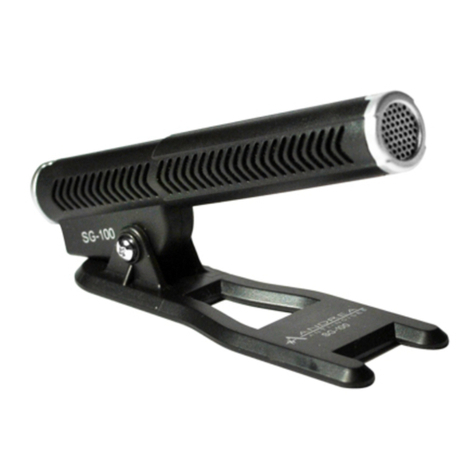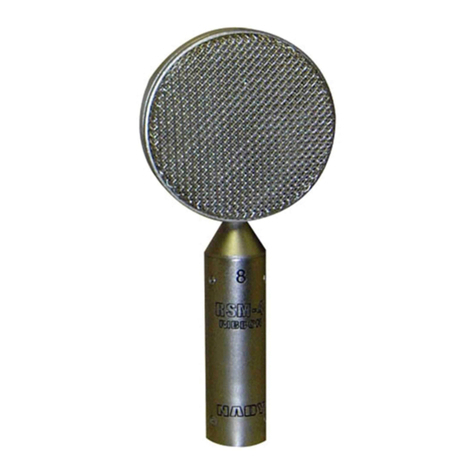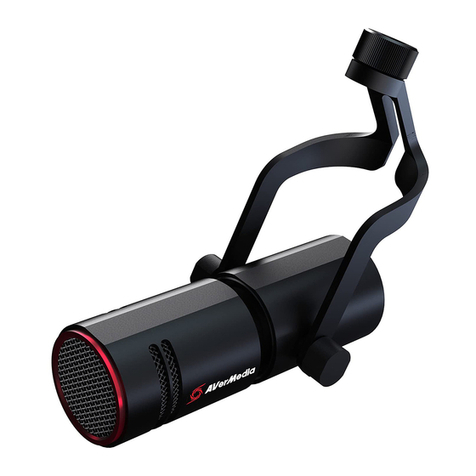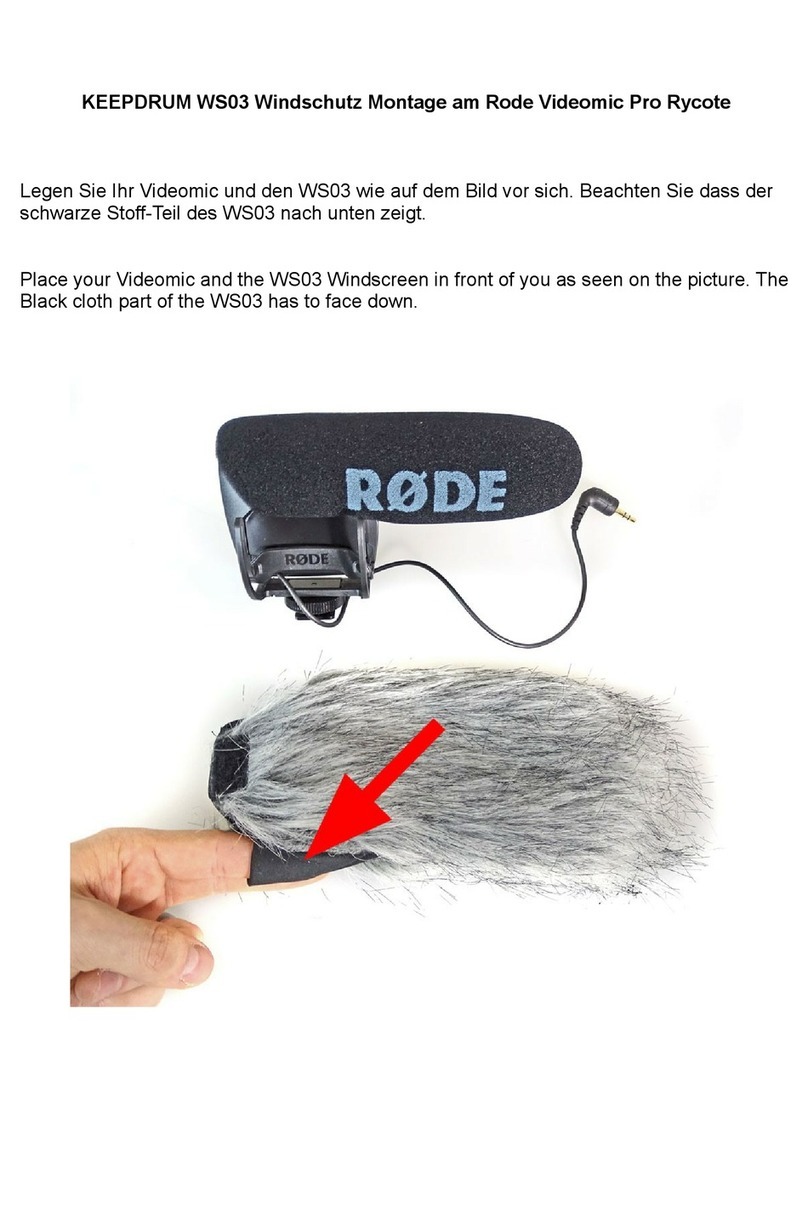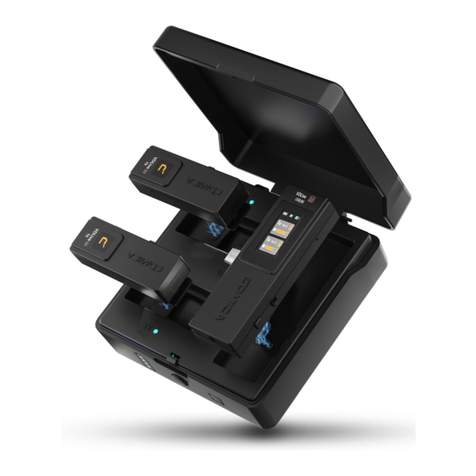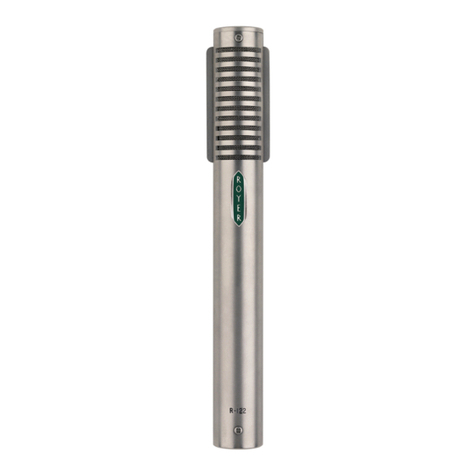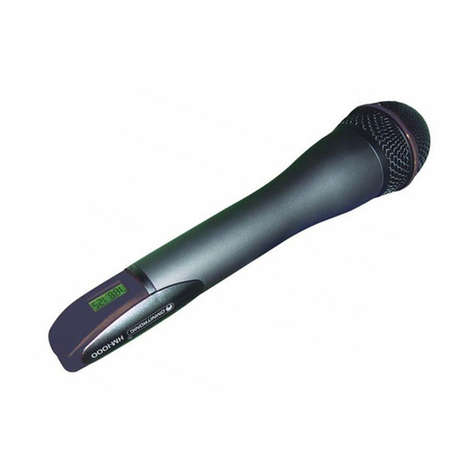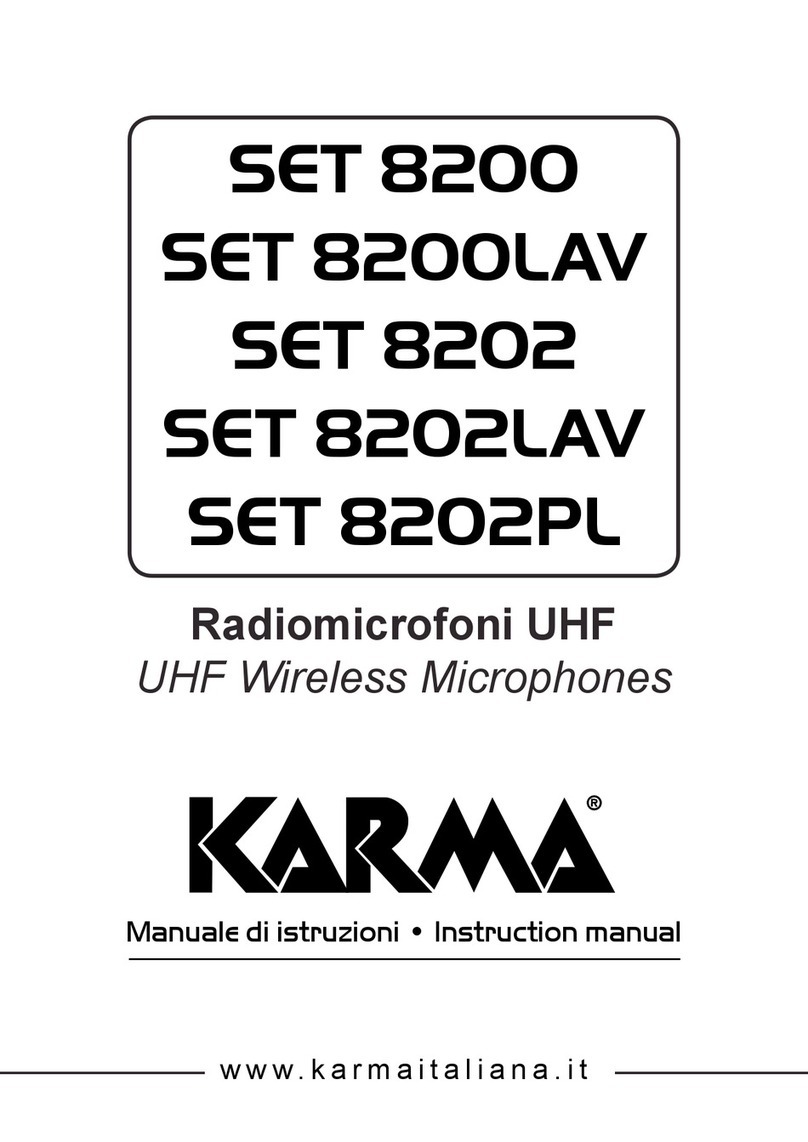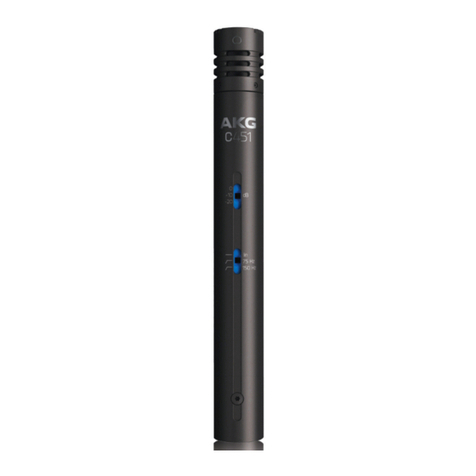Manley Langevin CR-3A User manual

MANLEY
LABORATORIES, INC.
OWNER'S MANUAL
LANGEVIN CR-3A
FET CONDENSOR MICROPHONE
MANUFACTURED BY:
MANLEY LABORATORIES, INC.
13880 MAGNOLIA AVE.
CHINO, CA. 91710 USA
TEL: (909) 627-4256
FAX: (909) 628-2482
email:[email protected]
http://www.manleylabs.com

CONTENTS
INTRODUCTION 2
TIPS and TECHNIQUES 3
SPECIFICATIONS 5
WARRANTY 6
INTRODUCTION
Thank You for purchasing the Langevin CR-3A. This microphone has an interesting evolu-
tion story. It was originally built in China for "ASC" until Manley purchased the rights to it
when ASC quit the microphone business. Manley was impressed by a few of the mics but
was not satisfied with the consistency. This required a visit to China to tighten quality
control for both capsule and circuit boards. The solution was a combination of efforts with
some critical parts supplied by Manley. A few of the early batches were finished in a black
paint finish with either a VTL or a red Langevin logo- You may see some of these around.
Later batches returned to the clear silver look. The final evolution was for Manley Labs to
design and build new circuit boards and have all the parts placement and final construction
take place in the Manley factory in California. Truly an international effort now. By the way,
testing and repairs have always been done by Manley employees. This international coopera-
tion has resulted in a good general purpose mic at an affordable price. The CR-3A usually
wins compared to European mics selling for four times the price. Some major producers
have several CR-3As for vocals and guitars and find it to be a fine general purpose mic in
any studio. Enjoy.
The Langevin CR-3A is a FET Condensor mic that features a large diaphragm capsule. The
capsule itself is 1.25 inches overall with a diaphram surface of 1 inch. The membrane is 6
microns thick polyester film which supports a thin layer of gold. Besides quality materials, a
large part in the art of capsule design is the tension to which the film is stretched over the
precision machined brass ring. The art is the correct amount of tension and doing it in a way
that insures the film stays that exact tightness for many years. Some people can play piano
and some can make mic capsules - its technique, practice and special fingers. The capsule
needs electronics to make it a usable microphone. The only choices are tubes or FETS. The
CR-3A uses a FET input with a bipolar output stage. The electronics require power - 48
volts phantom power is supplied from most consoles and mic preamps right along the mic
cable. All you need to do is make sure it is on. For you tech heads out there - the circuit has
two 1KM resistors in it. Thats 1,000,000,000 ohms or 1 gig-ohm. We joke about replacing it
with a chunk of plastic. Not likely to find these kind of parts in most repair shops.

TIPS AND TECHNIQUES
Freelance engineers can safely skip this page - it is more for those less familiar with condensor mics. Let
us start at the beginning. The box the mic was shipped in also has three other items. There are two varieties of
mounts and a foam pop filter. The smaller mount we call a "Hard Mount"and is for situations where space is
cramped or TV where a certain appearance is needed. It slides on the bottom of the mic near the XLR connector
and "T" ring screws on clockwise to hold everything together. In general, with mics, avoid "over" tightening
adjustments and mounts and be extra careful not to "cross thread". If it doesn't feel right it probably isn't - If
substantial effort is required to remove a mic then it was over-tightened. Normally, we use the "Shock Mount"
whichlooksliketworings-onesuspendedintheotherbyelasticwhichisolatesthemicfrommostfloorvibration.
You simply slide the mic into the inner ring so that the ring covers the "CR-3A" label then turn the black lever on
the ring counter clockwise which safely locks the mic in place. The mount can attach to either of the two standard
threadtypesonmicstands.Forthelargerthreadsize-useacointounscrewthe"threadadapter"counterclockwise.
The lever on the side is to tighten or loosen the swivel to allow you to aim the mic where needed. The foam pop
filter slips over the grill and is often needed for vocals and outdoor use where wind might be a problem. For most
other uses the pop filter can be left off. Unlike stage mics, the "face" of the mic is where the label and switches
are and not the end. Visually aim the mic toward the sound you want to record.
The distance from mic to instrument is your choice but you should consider a number of factors. The
further a mic is from the source the more room reflections and leakage from other instruments will be picked up.
At about 8 inches and closer all directional mics have a tendency to boost lows. This is called proximity effect.
Itcanbeusefulornot.Forsomesounds(especiallyleadvocal)sometimesthedesiredsoundis"intimateandclose"
- here, of course, the mic should be close to the mouth and more attention should be paid to excessive proximity
effects and pops. Pop filters that look like stretched nylon on a ring are often used to prevent pops for vocals and
often paired with the foam pop filters for some singers. There is a switch on the mic to also help these potential
problems - It is called a high pass filter and is labelled as a bent line. It cuts lows below 100 hertz to remove some
oftheproximityeffect,roomrumbleandpops. The position that looks likeastraightlineisthe"flat"position with
all the the lows intact. The other switch labelled 0 dB and -10 dB is called a pad (in the -10 dB position). For loud
sounds you should probably switch to the -10 dB position to avoid distortion. For quiet sounds the 0 dB position
will give the best noise performance.
This mic requires "phantom power" to operate. Luckily 48 volt phantom power is available on most
consoles and mic preamps and this power flows down the mic cableto the mic. All you have to do is make sure
phantom is turned on and use a good balanced mic cable. STOP! Turn down the monitors before turning phantom
power on. The mic signal is typically about a hundredth of a volt and phantom is 48 volts. Big difference. Quite
a loud pop or thump can happen when you turn on phantom. This could also happen if you change a mic or mic
cable or mic patch. ALWAYS turn the monitors down before changing anything in the mic path to the preamp.
'Tisagoodhabitevenwith non-phantommicsorwhenphantom isturnedoff."SavetheSpeakers"couldbea good
bumper sticker for old engineers.
Thismichasadirectionalpatterncalled"cardioid".Cardioidcomesfromthesamelatinwordthatcardiac
comesfromandreferstotheheart.Cardioidmeansheartshaped andiseasilythemostcommonlyusedmicpattern.
It tends to be most sensitive or loudest in front and least sensitive or deadest in back opposite the switches. Very
few mics have a flat response in back when in cardioid so some coloration may happen to leakage from the back.
Youshouldhavesomebodywalkaroundthemicwhileyoulistentobecomefamiliarwiththepatternandtonefrom
variousdirections.Onethingyoushouldnoticeisthatthatthemicisnotcompletlydeadintheback.Thisisnormal
and true for any other mics you may have. Some mics have other patterns like "omni" and "figure 8". Omni is
supposedto be non-directional and will pickupsoundfromalldirectionsequallybutinreallifethebackisusually
different. Omni mics have no proximity effect. Figure 8 has a pattern that looks like an "8" where it should pick
upsoundsfromthefrontandbackbutnotthesides.Usuallythesideshaveaverydeadspot,thebackisoutofphase
with the front and the proximity effect is very strong. Patterns like "hyper cardioid" and "super cardioid" are in
betweencardioidandfigure8withanarrowfrontpatternandsomebackpick-up.Eachcanbeusefulandmis-used.
Cardioid is easiest and usually what people expect mics to act like. Better to have a good cardioid than a poor
sounding multipattern mic.

A few last tips regarding condensor mics.
The capsule is a plastic membrane just a fraction of an inch fom a back plate. These two pieces are charged with 40
volts between them. When the membrane vibrates that 40 volts changes a few hundredths of a volt and that is the
signal that gets amplified inside the mic. If moisture gets into that space between the membrane and back plate it
can short out the 40 volts and cause the mic to lose sound - until it drys. Remember, that the human voice is quite
moist. The moister the voice of the singer and the higher the humidity the more likely the mic will quit in mid-song.
It is not too common of a problem and you may never experience it but if you do relax - the sound will be back in
afew minutes. To prevent this, use thepop filters, use more distance or move the mic off center of the mouth so that
the moist breezes bypass the mic. This occurs with most condensor mics from time to time. If it does happen, take
a 15 minute break. The mic should "come back" in a minute or two but allow that extra time to allow it to dry better
or else it will just do it again in a few minutes. Don't use a hair dryer, heat or blower to dry the mic. You could do
damage to the diaphram. A small fan a few feet from the mic turned on between takes is the "emergency" option.
There is also a few electronic parts inside that are sensitive to moisture and contamination. Try to keep the mics as
clean and dry as possible and they should last you dozens of years.
Condensor mics are rarely seen on stage for live vocals. Why ? 1) They pick up more leakage and tend to be more
apttofeedback. 2)Singingreal, real close intoacondensormicmight create problems. 3) Theyaresomewhatmore
fragile and 4) they are usually big enough to block pretty faces. Usually the only place for condensors on stage is
overhead drum mics. What is a problem in one application is an advantage in another. Part of that leakage problem
isararelypercievedqualityofmanymics.Theytendactabitlikecompressorsandbringuplowlevelsoundsatleast
compared to our normal hearing . That can work to our advantage or disadvantage depending on the situation. This
ispartlywhyyouseesingersinseparaterooms(iso-booths)orblockedoff(gobos)inbandrecordingsituations.You
can't do that live.
The CR-3A is known to work as well as some very expensive mics on most singers. On some voices it is the winner
outofadozenmoreexpensivevocalmics.Onsomevoicesitmaynotbe"right".Tobeexpected,someunusualvoices
sound best with unusual mics. Try a few mics with a new singer. You often see vocal mics hanging upside down
from large mic stands in videos. It does not make a lot of difference sound-wise but it gives the artist a tendency to
stretch up rather than down to a mic. The height of the mic can slightly affect the balance of nasal tone that the mic
picksup. The largerstands also look"professional" and tendsto discourage thesinger from "adjusting"the position
ofthe mic. In major studios, vocals aremost often recorded through electro-optical compressors like the UREI LA-
2AorthetheManleyElectro-OpticalLimiterandthendirectlytotape.Theamountoflimitingdependsonthevoice,
songandmictechniquebutitisusuallygentleand"invisible".OnerarelyseesanyEQappliedtovocalsuntilmixing.
Most singers like some reverb to sing best. Thats normal but sometimes a short delay or flanger will be the trick.
Donotrecordthiseffectorifyoumust,recordittoaseparatetrack.Manywanttohearlotsofvoiceintheheadphones
and headphones that are really loud. To be gently avoided. It usually causes them to sing flat and then burn out in
a few hours. Try changing the phase (polarity) of the mic. If for some reason the headphones are out of phase with
the real voice, it will never sound right in the headphones. Another rarely used technique is using stage monitors or
speakers rather than headphones. It is tricky avoiding too much leakage and requires some careful positioning but
at least make the leakage sound OK. Some find singing in the control room to be best. For communication and
teamwork it works but it does make the engineer earn thier money. Headphones on... headphones off, mixing for
leakage, using stage mics to record and any other tricks to make it happen.
Record as cleanly and smoothly as possible and capture the music - the performance. Don't get too wrapped up in
techno-world during a session. Nobody really cares about that - only the final result. Use good gear, not gear that
uses you up. Be nice - its intimidating and weird to be on the "other side of the glass" and the musicians probably
have a lot of "career" and "artist" emotions wrapped in this session even if they don't show it. Make it easy and fun
because thats why you got into this thing in the first place. The dreams, the money..... that too.
Last bit o' advise. When you lay your mic cable on the floor consider running it neatly and flat and taping it down.
Murphy's Law - you will trip on the cable, pulling over the mic stand, pushing the mic through somebodies classic
Martinacoustic guitar. At the end of the session before musicians pack up, disconnect the mics first and move them
out of danger. You can leave them on the stands but it is better to put them back in the boxes to minimise dust build-
up, damage, or theft. Mics "walk" more than any other studio gear.

CR-3A Specifications
Acoustical Operating Principle:
Polar Pattern:
Difference between 0 and 180 :
Frequency Range:
Source Impedance:
Minimum Load Impedance:
Maximum SPL for 0.5% THD at 1KHz:
with -10dB sensitivity reduction:
High Pass Filter:
S/N ratio (DIN 45-590) Ref. level 1 pa:
Maximum Output:
Power Supply (DIN 45596):
Current Consumption:
Weight:
Dimensions:
Shock Mount O-Ring Material:
Pressure Gradient Transducer
Cardioid
≥12dB @ 300Hz-3KHz, ≥15dB @ 1KHz
40 Hz - 16 KHz
200 ohm ± 20% (1KHz)
1 k ohm
122 dB 25 pa
132 dB 79 pa
6 dB per octave @ 100 Hz
67 dB
300 mV
48 V ± 4 V (Phantom Powering)
2 mA
0.475 kg (17 oz.)
54 mm diameter, 200 mm long
Size #114 Buna-N or Silicone Elastic O-Ring
O
O
SIDE VIEW TOP VIEW
CARDIOID PATTERN
32 40 50 62 80 100 125 160 200 250 320 400 500 620 800 1K 1.61.25 2K 2.5 3.2 4K 5K 6.2 8K 3225201612.510
-1
-2
-3
-4
-5
-6
-7
-8
-9
-10
+1
+1
+1
0
+2
+3
+4
+5
+6
+7
+8
+9
+10
CR-3A ON AXIS (FRONT)
FREQUENCY RESPONSE
CR-3A OFF AXIS (BACK)
FREQUENCY RESPONSE
AVERAGE CURVE USED TO TEST MICS.
YOUR MIC WILL BE +/- 1.5 dB FROM THESE CURVES
These "cardioid" shapes show how distant a sound can be for "equal" volume and are only intended to
illustrate the cardioid pattern. Try talking "around the mic" to relate it to your real world experience.

WARRANTY REGISTRATION
We ask that you please fill out this registration form and send the bottom half to:
MANLEY LABORATORIES
REGISTRATION DEPARTMENT
13880 MAGNOLIA AVE.
CHINO CA, 91710
Registration entitles you to product support, full warranty benefits, and notice of product
enhancements and upgrades. You MUST complete and return the following to validate your
warranty and registration. Thank you again for choosing to use Manley Laboratories.
MODEL LANGEVIN CR-3A____________________
PURCHASE DATE ______________ SUPPLIER ______________________
------------------------------------------------------------------------------------------------------
PLEASE DETACH THIS PORTION AND SEND TO MANLEY LABORATORIES or photocopy it
and send us the copy.
MODEL LANGEVIN CR-3A
PURCHASE DATE ______________ SUPPLIER _______________________
NAME OF OWNER _______________________________________________
ADDRESS ______________________________________________________
CITY,STATE,ZIP________________________________________________
TELEPHONE NUMBER ___________________________________________
Serial #'s of Associated Manley Laboratories Equipment ___________________
________________________________________________________________
Table of contents
Other Manley Microphone manuals
